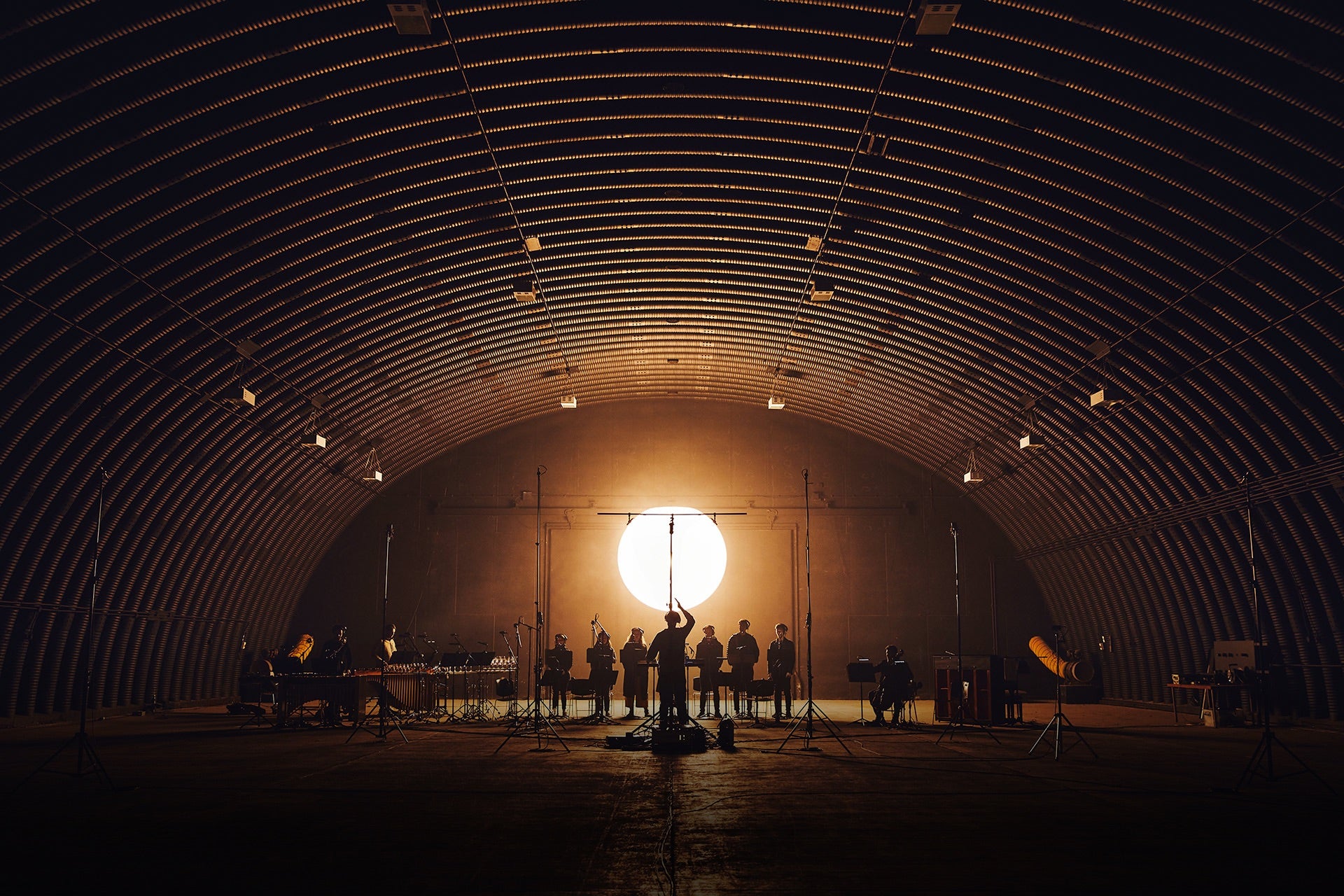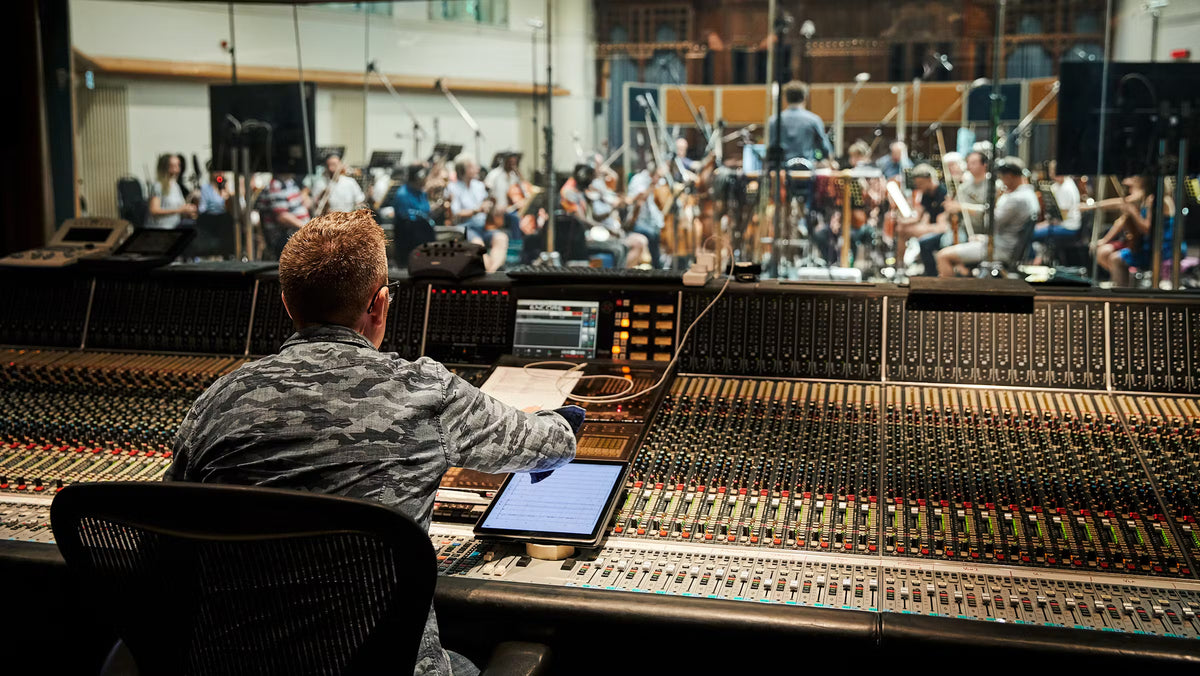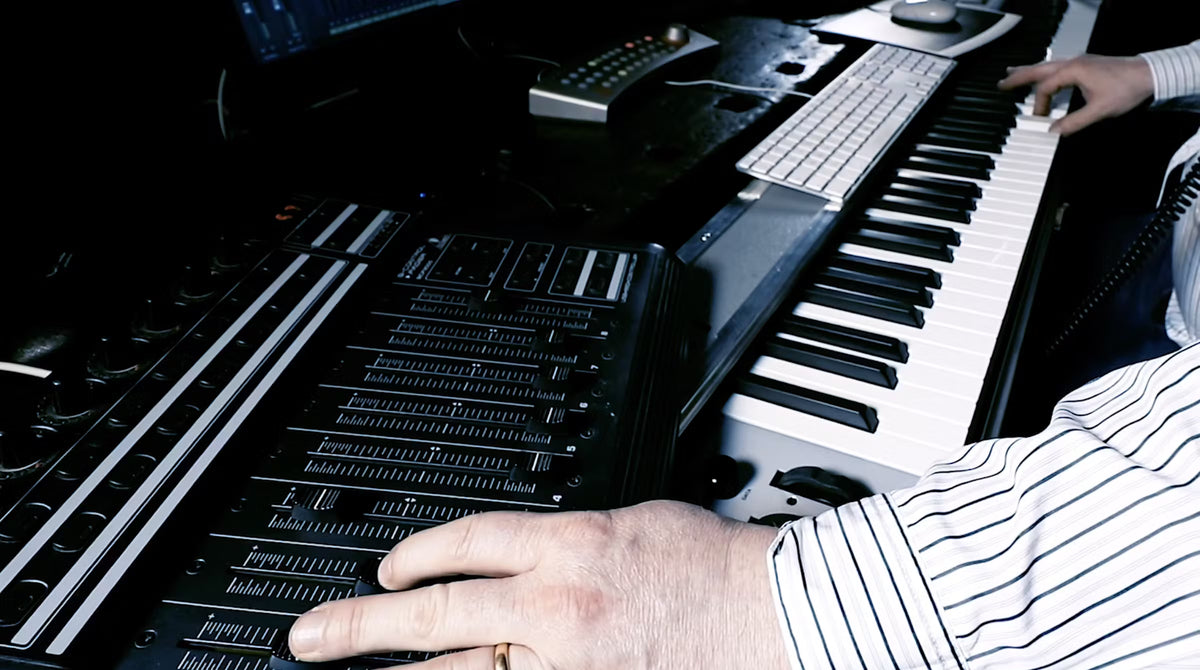In this video, Christian Henson and Jake Jackson tackle the much debated question - ‘Can you can mix recordings and samples that have been made in different locations with contrasting acoustics?’ The resounding answer is yes. We pick out 5 cardinal rules for working with dry and reverberant samples and recordings and how to make them sound like they are in the same room.

Mixing Orchestral Samples
How to mix orchestral samples recorded in different locations
Last updated June 2017.

1. Observe commonly used recording techniques
Sound is about the movement of air. When recording an overdub (or “underdub”) make sure to get some air between the instrument and your microphone. A common mistake when getting a solo violinist to play in your home studio is the fear of capturing any of your own room. This means people often microphone instruments too closely. In order to get the sound of some air moving in front of a section of violins and your own solo violin, to sound like they’re in the same room, make sure you capture the same or similar chunk of air.
2. Balance your samples without fear of the sample police coming calling.
Another common mistake (often made by engineers wanting to showcase their amazing live recording and bury your ‘fake’ samples) is not blending the two recordings correctly. Make sure your ‘live’ or ‘dry’ recordings sit right in with the bigger wetter stuff, so they form a delicious crusting of focus and reality on the top of your scores.
3. Use the same reverb on both your ‘wet’ recordings and ‘dry’
It doesn’t take much to trick the brain, so a little bit of quality reverb on all your recordings (more, naturally, on your dry) will fool the brain into thinking they were all together in the same room on the same day. In this video, Jake uses his ‘double jug’ technique of applying two gravies (reverbs) to both the Air recordings and the Kings Cross ones to blend everything together.
4. Don’t apply the same amount of reverb to ‘short’ and ‘longs’ sampled articulations
Because of the nature of virtuosic playing styles, all world class players will allow long notes to die off a little before becoming silent. This is called ‘diminuendo’ and is the reason short samples often sound wetter than long. It is imperative therefore that you track-lay and / or apply differing amounts of blending reverb to shorts (less) and longs (more).
5. Don’t program samples in ways that don’t reflect how players will play
Whilst being a bigger subject, the key to sampled realism is empathy. If you’re programming stuff in a way that doesn’t represent the way players would play it, it won’t sound real, and you’ll struggle to get your sampled and live to mix. A common mistake is the omission of the aforementioned diminuendos at the end of long notes. Don’t stop your samples suddenly - the live players wouldn’t. Gently bevel them down towards oblivion.
Here is the finished version of the track
In Action
Christian’s tutorial for creating this track using the London Contemporary Orchestra Strings and MASSE, two very different sounding libraries.
